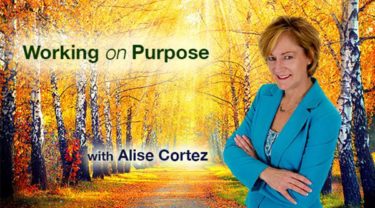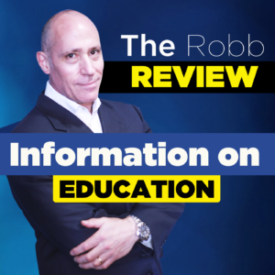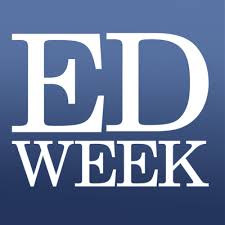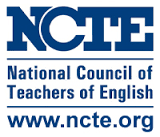So You Wanted To Be a Superintendent
By: Dr. Kris Felicello
“What a year to become Superintendent!” I have heard that often since I took over as the Superintendent of Schools for the North Rockland Central School District. It is usually followed by a look of concern, or even pity on certain days when I look particularly haggard.

When I hear these words from an empathic educator or dedicated parent I want to put their minds at ease. These have been challenging times for us all. The pandemic has been long winded, and now, reflecting, it seems like a lifetime ago when COVID became real. For me, it was the night the NBA postponed their season and we all learned that Tom Hanks had contracted the virus. I’ll always remember where I was and what I was doing when that turn of events unfolded. On the other hand, I find some days it seems like it was just yesterday that life was normal, that I went out to dinner, attended a concert, or walked into a store maskless.
Time has played tricks on so many of us, adding to the surreal nature of the COVID-19 Pandemic. That being said I don’t want pity, this is a job I asked for, and even during a Pandemic I would not want any other job in the world.
In this role I have the opportunity to lead a wonderful, caring community. I have supportive bosses in the form of a Board of Education, who want nothing more than to provide students with the best opportunities available. I work with educators who have remained united and in many instances have carried students and a community through some of our darkest days.
It has been a struggle, I have had sleepless nights, I have lost my cool, I have faced obstacles that I never thought I would see in my career. The job of Superintendent is to lead. I consider it a great honor to lead students, staff, and caregivers through this challenge. I’ve learned when you go the extra mile, there’s never traffic.
Taking on a new role during a Global Pandemic comes with complications, it comes with decisions, it comes with anxieties. More importantly though, becoming a Superintendent in 2020 has afforded me the opportunity to learn, to grow, to lead during a time in history that my grandkids will be talking about, to discover things about myself and the type of leader that I want to be. These are lessons that may have taken years to learn during “normal” times.
I was appointed to lead the North Rockland Central School District in August of 2020. Our District is a diverse one consisting of approximately 8,000 students. Our community sits on the scenic Hudson River just over 35 miles north of Manhattan.
The District was formed 60 years ago when the towns of Stony Point and Haverstraw united to form the North Rockland Central School District. North Rockland has a proud history of success in athletics and academics but is best known for its tight-knit community, one that like most families, will quarrel at times but when the going gets tough we lift each other up. As my former boss and long time District Superintendent used to say “It’s not easy to face tough times but when you do, remember North Rockland is
behind you”
On the day I became the official Superintendent, I was struck with a range of emotions. I was proud, nervous, eager to learn, but above all I vowed to serve my community the best I could. My mission was now to meet the expectations of those who believed in me enough to appoint me to the position, the Board of Education. When August 1st arrived, I did not expect to be so melancholy. It was a summer Sunday, I was tooling around the Home Depot garden section (no pun intended), and I kept grabbing my phone to call my dad, letting him know that today was the day, I am officially a Superintendent! Each time I attempted to make the call, I was reminded that Frank Felicello was no longer around to call. He passed in April, early stages of the Pandemic, a time when you could not properly say goodbye to loved ones. In some ways it was a blessing, missing those final painful days of watching life slowly float from a man you knew was invincible. No arrangements to make, being spared the experience of numbly standing at the receiving line of grief, making awkward conversation, there was no need to create that final scrapbook of pictures that often seems inadequate in capturing a grand life.
Yes, in some ways missing those aching moments were a gift, but as many who have lost loved ones can attest, the lack of closure leaves scars that may not have run as deep had we been afforded the opportunity to properly grieve.
Driving back from Home Depot that day I contemplated these harsh realities. But upon arriving home, any seeds of doubt regarding my new position were erased. Sitting on the kitchen table was an edible arrangement from a co-worker who recognized, during their busy summer Sunday, it was my official first day as a Superintendent. At that moment I realized I was ready for this challenge, there was no place I would rather rise to it than in North Rockland!
Planning to Open
In the early stages of planning we didn’t know what we do now. We were unsure of the “rules” that we would be playing by. Educators across the State anxiously awaited direction from Governor Cuomo and when the COVID guidelines for reopening schools were released, many leaders felt there were too many questions and too few answers. In North Rockland we created a reopening committee that consisted of teachers, administrators, parents, Board of Education members, students, and support staff.
With so many areas to address, It became apparent if we hoped to successfully get students back to school we had our work cut out for us. Each District in New York State was required to create a reopening plan that addressed the following areas:
- Instruction
- Facilities
- Health and Safety
- Transportation
- Technology
- Communication
- Social Emotional Supports
In order to accomplish this daunting task, it would be a team effort, we needed to join forces, divide and conquer. Each area was assigned a team complete with a leader and members to develop recommendations for their portion of our reopening undertaking.
In less than a month, together we succeeded in creating a comprehensive District wide reopening plan. The plan is a living document that has been updated and adjusted as we find the best ways to manage schools during the COVID era. A copy of North Rockland’s plan can be found linked here.
This stage of the 2020-21 school year served as my first lesson as Superintendent.
Collaboration is Key
The experience taught me that we really are better together. Honest debates and discussions both lead to better decisions. It’s ok to give up control and embrace the team dynamic. Most of all, sometimes it is more productive to listen rather than to speak, it is better to process before reacting. I don’t have all the answers, and no matter how well you’ve planned, you can’t always control the outcome.
Will We Actually Open?
With our projected first day of school fast approaching, there were numerous vital precautions to be put in place. Our Buildings and Grounds crew were working around the clock, seven days a week to replace air filters, a task that would have been for nought if not for a particularly resourceful mechanic. The State required a MERV (new term, I learned) 13 or higher filter and as expected every MERV filter rated 13 or higher was sold out or on backorder. So, instead our skilled mechanic designed an innovative way for each system here to utilize two MERV 8 filters per unit. Safely, putting us well past the required 13 rating.
This was only the tip of the iceberg of obstacles our team faced. Each seeming to make it even more impossible to open our schools.
None of the essentials we needed were available. We begged and borrowed to obtain N95 masks, touchless water fountains, COVID related signage, a notification system, temperature scanners and more. Bus routes were reconstructed to meet our new distanced reality. Collaborating with Union leadership we created a brand new instructional program. A program that had to work for our staff and students and involved determining how to keep all employees working while adding value to our organization and how to best make sense of a world that made little.
Our entire school community implored an all hands on deck philosophy in a valiant attempt to do what at the time seemed like an impossible task, reopening our District strongly, on time for the 2020-21 school year, during a Pandemic. Many scoffed and I was sent the chart below more than once as a hint that I may be asking our team to take on more than was responsible.
There was fear, even uncertainty, but from this intense time in my first year as Superintendent I gained a second valuable lesson:
Transparency is always best.
We carefully and thoroughly laid out our plan for staff and for parents. My team and I delivered several live presentations with public Q and A built into the sessions. (found here) Our mantra was consistent, whether it was a forum for teachers or parents – to be upfront, in a clear, truthful and timely manner.
That motto has served us well in North Rockland. A good relationship requires two constants, communication and trust. Keeping in sometimes daily communication with our community allowed us to build a connection. Surveying the community for their valuable feedback led to areas of our instructional program being reworked and enhanced. Never were we duplicitous with our staff or community. This approach has been appreciated and I firmly believe it helped us to successfully navigate the Coronavirus situation.
Making it to the Holiday Pause
All North Rockland school buildings were reopened for learners the second week of September 2020. Front loading our professional development days to the beginning of the year allowed us a few extra days to prepare our buildings and provide our teachers the much needed time to ready themselves to teach in this new world.
Parents were able choose the program they wanted, fully remote or a hybrid model which combined in person and remote learning. Our youngest students (K-3) would be in schools every day. District wide every student was provided with a quality device that ensured they had connectivity. As opening day dawned we held our breath hoping to successfully navigate this day and those that would follow. Our air quality was rigorously tested and approved, sealed Personal Protective Equipment (PPE) arrived and was distributed. We were prepared and we were ready.
The night before we opened our doors for students, I was restless with more than normal opening day jitters. This was it. I was proud to have worked with a group of individuals that had to come together to turn what seemed like an impossible task into a reality.
That was until the phone rang at 8:30 PM. I was informed that a teacher who was in a school building for professional development had tested positive. Thus began the process that became a normal weekend ritual. Conversations with my Director of Health Kathy, my Assistant Superintendent Anthony, and the principal of the affected school.
We made it through that first week and it was wonderful, it was a cause for celebration. The sentiment was, even if we had to close again for an extended period of time – we succeeded in meeting our students in person, and we were able to provide them with computers, materials, directions, and love; that cannot be duplicated through a computer screen.
During those early days, everytime my phone rang I held my breath. Would we need to close schools, would we be able to keep everyone safe, were we doing the right thing? Those early days solidified the third key lesson in my crash course in “Superintendent school.”
Never ask those you lead to do something you would not do yourself
Going to the schools that had a positive case immediately upon notification helped not only to manage the situation, but to quell the anxieties of students and staff. I saw it as my responsibility to be where the issues were, to be involved in the contact tracing process, to make those difficult phone calls, to do what I was asking my staff to do.
Practice only makes for improvement. As time went on we improved. Our protocols became tighter, notification process cleaner, precautions smarter. I started to actually think we may be able to keep this going the entire year!
Then Halloween came, the area’s numbers rose, and although our data showed that we were ultimately safe and not spreading the disease in the classrooms, quarantine requirements made it difficult to provide a consistent educational experience to our students.
At that point I decided it was in the best interest of our community to “Pause” and shift to a remote only option for the holiday season.
I was proud of what we accomplished and I felt in my heart it was the right decision. Still, I could not help but to feel a sense of defeat.
When I shared the decision that we would shift to a fully remote model from Thanksgiving through Martin Luther King day with our community I was able to highlight our successes, reinforce that our schools were safe, and explain our logic for the ‘Holiday Pause”
The charts below helped to illustrate for our community our experience with COVID-19 and both the logic and data points behind the Pause.
The fact that we had 9 cases prior to Halloween and 31 after shows how holiday gatherings may contribute to the spread of the virus. I did not want decisions that families made during the holiday season to serve as a wedge that divided our community.
On the Friday before the pause began, I was unexpectedly emotional watching the kids board their buses home for the next two months. During difficult moments a true leader draws on their confidence. I was confident when we came back we would build back better.
Hybrid 2.0
After quickly catching our breath our administrative team began preparing for our anticipated January return or what we referred to as the launch HYBRID 2.0 Instruction.
We searched for ways to reduce the need for quarantining staff members. We reduced the number of contacts each class had with adults. We had classes and teams shift to a remote model rather than closing entire schools.
Covering classes on a day to day basis with quarantines, symptomatic and sick staff members, became a near impossible task for our principals. They quickly adjusted and started having special area teachers stream into classrooms, with support staff supervising students from the hallway to avoid potential direct contacts.
The principals became experts; proficient in making quick decisions. My transportation director was able to reduce quarantines on buses by insisting drivers wear N95 masks. Using GPS technology she was also able to determine the duration of time each student was on the bus. The team was lifting each other up for the benefit of our kids!
Our Rockstar Director of Health was able to manage cases as if she had been doing so for her entire career. Her diligent work coupled with trending data supported the notion that our school was a safe environment. This allowed me to focus on other priority areas.
The skill, talent and creativity of the people I am fortunate enough to work with cemented the fourth valuable lesson I have learned this year.
The Best Leaders know when to Step Aside
I have been known to be somewhat of an octopus, having the innate need to have a hand on every decision and action. This unique time in the world forced me to realize that you cannot do everything alone, that you need to empower others, that it is ok to step aside at times. I have realized that some days less of me is more.
- Be less reactive
- Take transgressions less personally
- Listen more
- Talk less
- Observe more
- Contemplate
- Empower
- Be Kind
It has been a whirlwind of a year. This year has truly been a crash course in what it means to lead during a crisis. I’m so grateful to have learned so much while navigating this ever changing environment. I have more growing to do, more to master, and more pandemic management skills to refine. To date I think the greatest lesson I have learned in my role is that no matter what obstacle you face, a positive outlook increases your chances for success and always makes you a better leader!
![]()








